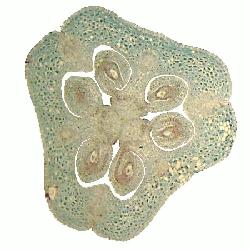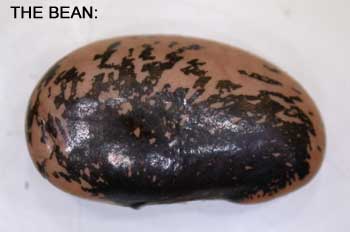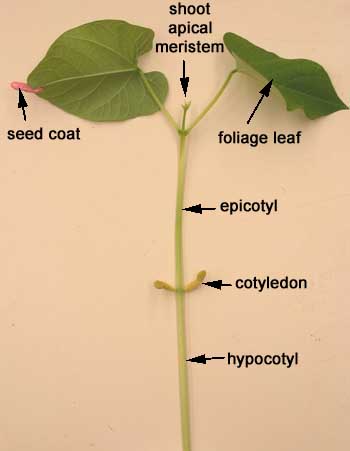2. OVULES TO SEEDS
Pollen grains are transferred to stigmas most commonly by the wind, insects, or birds. Pollen tubes grow down the style to the ovules. Double fertilization (unique to the Anthophytathes) occurs. One sperm unites with the egg to form the zygote, and the other unites with the fusion nucleus to initiate endosperm development (the nutritive tissue for the growing embryo). Following fertilization, the ovules become seeds and the ovary (plus or minus accessory structures) develops into the fruit. Fruits protect the seeds and are especially important in aiding seed dispersal by a number of mechanisms.
This is a cross-section through the ovary of a lily. The round structures within the ovary are ovules. Each ovule houses an egg. An ovule is made up of more than just one egg however. The ovule also includes the layers of cells surrounding the egg.
Here is a cross-section through a typical ovule. In this case there are two integuments. Some plants have only one integument. The integument is the outermost layer of cells. Inside of the integument is megasporangium (=nucellus) which houses the megaspore and ultimately the female gametophyte.
The ovule develops into the seed. The integument (In) becomes the seed coat. This is a picture of a longitudinal section throught the seed of Capsella bursa-pastoris (Shepherd’s purse). It is still developing on the parent plant. The embryo (Emb) will elongate further and more endosperm (End) will develop. The nucellus (N) will become less obvious.
Recall that the endosperm develops from the product of the fusion of the polar nuclei and sperm nucleus in the embryo sac.
This is a seed of castor bean (Ricinus). The weird thing on the end of the seed absorbs water prior to germination. It is called a caruncle.
Castor bean has an endospermous seed. When we break the seed in half we can see the cotyledons lying within the endosperm tissue. As the seed germinates the cotyledons absorb the nutrients and the seedling grows.
In lab we looked at the bean seed (Phaseolus). We saw that instead of the nutrient materials being stored in the endosperm, the cotyledons (embryonic leaves) have accumulated the storage products. These seeds are thus said to be “non-endospermous”.
Here is a picture of a bean seed. The contents within the seed coat is the embryo.
Here is a close-up of the rest of the embryo. The cotyledons are very large relative to the size of the embryo. Can you see which part will become the first root of the seedling? It is called the radicle. The first “real” leaves can be seen here.
As the seedling grows the cotyledons remain attached and even become photosynthetic.
They are retained for a brief time before they wither and fall off.
The two plants we have examined are dicots (having two cotyledons). Let’s take a look at a MONOCOT SEED. What are some of the other differences between MONOCOTS and DICOTS?
2. DEVELOPMENT OF OVULE AND SEED
DEVELOPMENT OF FEMALE GAMETOPHYTE
3. FLOWERS OF SELECTED SPECIES
4. DEVELOPMENT OF THE FRUIT FROM THE FLOWER









